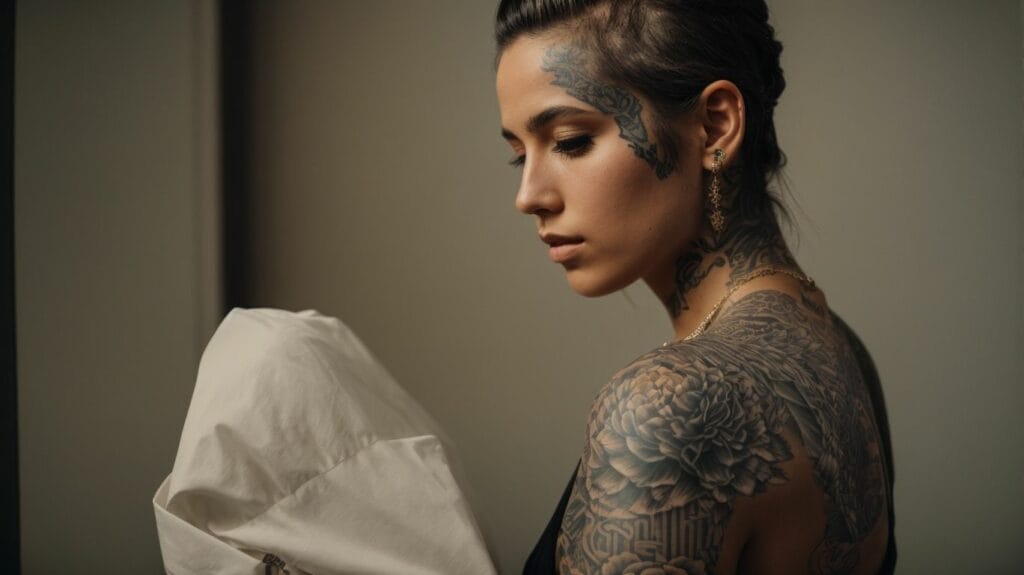Table of Contents
Add a header to begin generating the table of contents
Tattoos have become a popular form of self-expression and body art, but one of the concerns many people have is the potential pain associated with getting inked. The level of pain experienced during the tattooing process can vary widely, depending on a range of factors. Understanding these factors can help individuals make informed decisions about the placement of their tattoos and manage their pain expectations. Here are the key factors that influence the pain perception of tattoos:
The body is made up of different areas with varying levels of sensitivity. Some areas are more prone to pain due to thin skin, proximity to bones or nerves, or high concentration of nerve endings.
The size and complexity of the tattoo design can also contribute to the overall pain experienced. Larger and more intricate designs may require longer tattooing sessions, which can increase discomfort.
Every individual has a different pain threshold, which refers to the level of pain a person can tolerate. Factors such as genetics, previous experiences with pain, and personal pain tolerance can influence how an individual perceives the pain of getting a tattoo.
The upper arm is known for being one of the least painful areas for tattoos due to the thick skin and the abundance of muscle tissue.
The thigh is another area that is relatively less sensitive and can be less painful for tattooing.
The calves are considered to be less painful due to the presence of thick skin and a good amount of muscle padding.
The forearm can be moderately painful, especially closer to the inner elbow and near the wrist.
The upper back, while generally less sensitive, can still cause moderate discomfort due to the presence of thin skin and proximity to the spine.
The shoulder area can be moderately painful, especially towards the collarbone and closer to the neck.
The rib area is notorious for being one of the most painful areas for tattoos because of the lack of muscle and a higher concentration of nerve endings.
The spine is another highly sensitive area where the pain can be more intense during the tattooing process.
The inside of the upper arm, especially closer to the armpit, can be particularly painful due to the presence of thin skin and increased nerve sensitivity.
The emotional and mental state of an individual can also impact their pain perception. Being mentally prepared, relaxed, and having a positive mindset can help manage pain during the tattooing process.
The tattoo artist’s technique, including their speed, pressure, and experience, can influence the pain experienced during the tattooing process.
Proper aftercare and following the tattoo artist’s instructions for healing can help minimize post-tattoo pain and discomfort.
By considering these factors and understanding the varying pain levels associated with different tattoo placements, individuals can make informed choices about their tattoos and ensure a more comfortable experience.




In addition to the location, factors such as size, complexity of the design, individual pain threshold, emotional and mental preparedness, the tattoo artist’s technique, and aftercare also contribute to the overall pain experience during and after getting a tattoo on the spine.

Key takeaway:
- The location of the tattoo greatly affects the level of pain experienced. Areas such as the upper arm, thigh, and calves tend to be the least painful for tattoos.
- Tattoo pain perception is influenced by factors like the size and complexity of the design. Smaller and simpler tattoos are generally less painful compared to larger and intricate designs.
- An individual’s pain threshold plays a crucial role in the pain experienced during a tattoo. Some areas such as the ribs, spine, and inside of the upper arm are considered to be the most painful for tattoos.
Factors Affecting Pain Perception of Tattoos
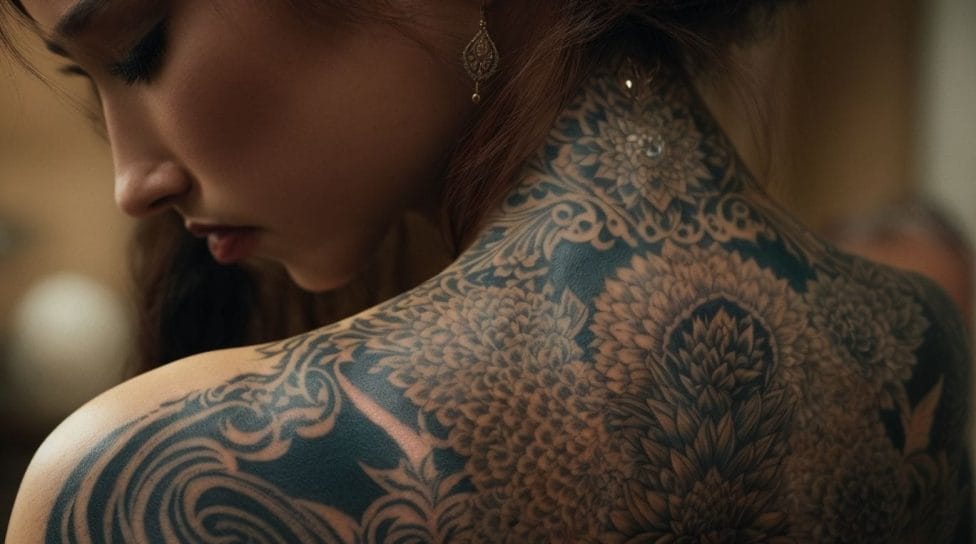
Photo Credits: Tattooineplanet.Com by Christopher Carter
Discover the key factors that influence how painful tattoos can be! From the location of the tattoo to the size and complexity of the design, and even your individual pain threshold, we’ll uncover what makes certain spots hurt more than others. Get ready to dive into the intriguing world of pain perception when it comes to getting inked.Location of the Tattoo
The location of the tattoo plays a vital role in determining the level of pain experienced during the tattooing process. When it comes to the location of your tattoo, there are certain factors to consider. 1. Upper Arm: The upper arm is a popular choice for tattoos and is generally considered to be one of the least painful areas due to the abundance of muscle and fat. Thus, it is an ideal spot for individuals concerned about pain levels. 2. Thigh: The thigh is another location that is relatively less painful for tattoos. It has a good amount of muscle and a thicker layer of skin, making it a comfortable option. 3. Calves: The calves are known to be less sensitive, resulting in a less painful tattooing experience. It is essential to remember that pain tolerance varies from person to person. What may be less painful for one individual may not be the same for another. Therefore, it is crucial to consider your own pain threshold and consult with a professional tattoo artist who can provide guidance based on their experience and expertise.Size and Complexity of the Design
When considering a tattoo design, it’s crucial to factor in the size and complexity of the design as they can have a significant impact on the pain experienced throughout the tattooing process. Here are some important points to keep in mind:- A tattoo design that is larger in size will typically require more time to complete, which could potentially result in prolonged discomfort.
- Intricate designs that incorporate fine details or shading may involve multiple needle insertions, leading to an increased level of pain.
- Tattoos that cover sensitive areas such as the ribs or spine may induce more pain, regardless of their size or complexity.
Individual Pain Threshold
The pain experienced during getting a tattoo varies based on an individual’s pain threshold. Each person has a different level of pain tolerance, which can greatly influence their tattoo experience. Factors such as genetics, previous experience with pain, and overall health can all contribute to an individual’s unique pain threshold. Some individuals may possess a higher pain threshold and consequently find the tattooing process less painful, whereas others with a lower pain threshold may find it more uncomfortable. It is crucial for tattoo artists to engage in open communication with their clients to ensure they are fully aware of their individual pain tolerance, enabling the artists to adjust their technique accordingly.Least Painful Areas for Tattoos
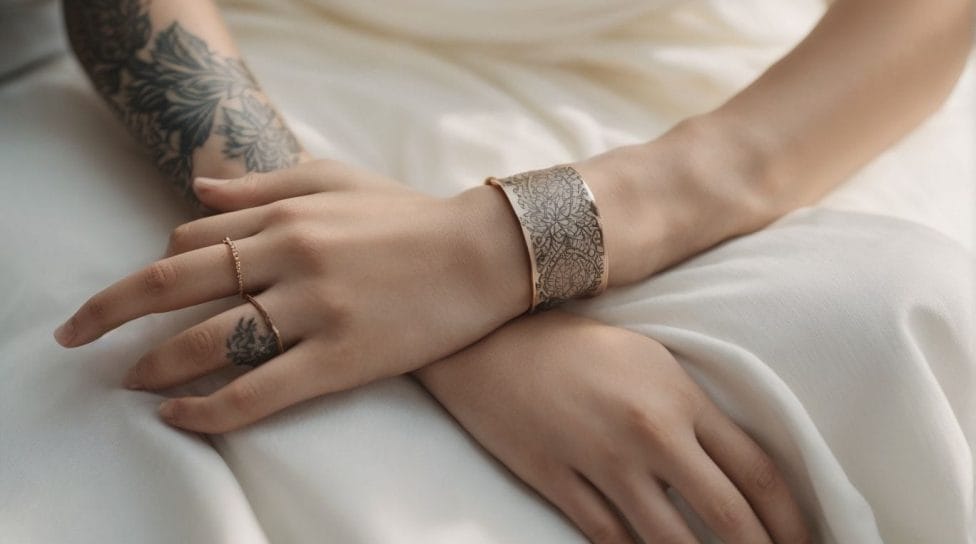
Photo Credits: Tattooineplanet.Com by Juan Lewis
When it comes to getting tattoos, we all want to minimize the pain. So, which areas are the least painful for tattooing? Let’s explore the upper arm, thigh, and calves, where you’re in for a slightly smoother ride. These spots tend to be less sensitive, making the tattooing experience more tolerable. So, if you’re considering getting inked, stick around to learn more about these pain-friendly canvas choices!Upper Arm
The upper arm, also known as the upper limb, is commonly regarded as one of the least painful regions to receive a tattoo. This is primarily due to the abundant presence of muscle and fat in this area, which effectively cushions the sensation during the tattooing process. Additionally, other relatively less painful areas include the thigh and calves. Prior to getting a tattoo on the upper arm, it is crucial to carefully consider the size and intricacy of the design. It is worth noting that larger and more complex tattoos may result in increased discomfort. Moreover, various factors such as an individual’s pain threshold, emotional preparedness, and the tattoo artist’s technique can greatly influence the level of pain experienced. Do remember to always adhere to proper aftercare instructions in order to facilitate a smooth healing process.Thigh
Selecting the thigh as the placement for a tattoo has its advantages and considerations. It is known as one of the least painful areas to get tattooed due to the thick layer of flesh and fat found on the thigh, which provides cushioning against the needle. There is ample space on the thigh for creating intricate and complex designs. Additionally, the thigh offers good visibility for showcasing the tattoo. However, it is important to note that individual pain tolerance can vary when getting a tattoo on the thigh, and the perception of pain can differ based on factors such as the size and complexity of the design, as well as the technique used by the tattoo artist. To ensure a successful and enjoyable experience, it is recommended to prioritize a thorough discussion with your tattoo artist, specifically regarding the placement on the thigh.Calves
Calves can be a popular choice for getting tattoos due to their visibility and larger canvas area. It is important to consider that the calves can be a moderately painful area for tattoos. The calves have a significant amount of muscle and thinner skin, which can make the tattooing process slightly more uncomfortable. Factors such as the size and complexity of the design, individual pain threshold, and emotional preparedness can also affect the level of pain experienced. Proper aftercare and healing process are essential to ensure the best possible outcome for a calf tattoo.Moderately Painful Areas for Tattoos

Photo Credits: Tattooineplanet.Com by Eric White
When it comes to getting inked, some areas of the body are known to be moderately painful. In this section, we’ll explore the forearm, upper back, and shoulders as prime real estate for tattoos. Discover the sensations and experiences associated with these areas, as we uncover the pain thresholds and considerations for those seeking some tattooed adornment. Get ready to dive into the details and find out where the ink might sting just a bit more than usual.Forearm
The forearm is a popular location for tattoos due to its visibility and relatively moderate pain level compared to some other areas. The pain experienced during a forearm tattoo can vary depending on individual pain thresholds and other factors. It is important to note that pain perception is subjective and may differ from person to person. Some people may experience mild discomfort or sensitivity, while others may find it more painful. The forearm offers a good amount of space for intricate designs and allows for easy visibility. Proper aftercare and adherence to the healing process are crucial for optimal results and to avoid complications. In the late 19th century, the forearm became a popular location for traditional nautical tattoos among sailors. These tattoos often represented certain milestones or achievements during their voyages, serving as a visual record of their experiences. The rich history of forearm tattoos continues to evolve as new styles and designs emerge.Upper Back
The upper back is known to be a moderately painful area for getting a tattoo. The level of discomfort can vary depending on an individual’s pain threshold and other factors such as the complexity and size of the design. Many individuals have observed that the sections of the upper back with more flesh tend to be less painful compared to areas with thinner skin or higher sensitivity. It is crucial to acknowledge that pain tolerance is subjective and differs from person to person. To minimize any form of discomfort, it is recommended to select an experienced tattoo artist and diligently follow the provided aftercare instructions.Shoulders
Getting a tattoo on the shoulders can be a painful experience for some individuals. Factors such as the proximity of bones and nerves in this area can contribute to increased pain sensation.- Shoulder blade: The area close to the shoulder blade may be more sensitive due to the presence of bones and a thinner layer of skin.
- Shoulder cap: The top of the shoulder, known as the shoulder cap, can also be a painful spot due to the high concentration of nerves and muscles in this area.
- Upper arm: The upper arm, adjacent to the shoulders, may be a less painful option as it has thicker and more muscular tissue.
Most Painful Areas for Tattoos
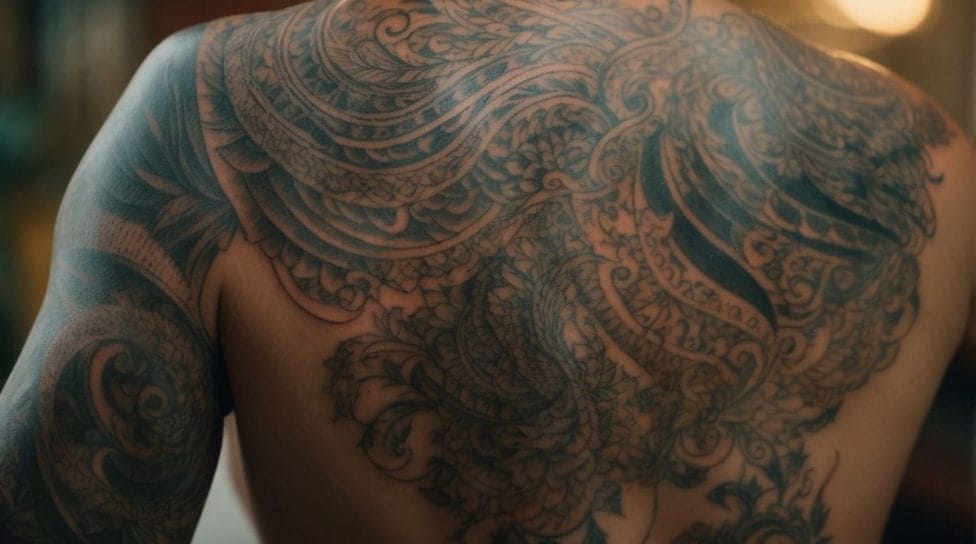
Photo Credits: Tattooineplanet.Com by Thomas Nguyen
Discover the wild world of tattoos and explore where it hurts the most. Brace yourself as we delve into the realm of the most painful areas for tattoos. From the ribcage to the spine, and even the inside of the upper arm, we’ll uncover the locations that can test your pain tolerance. Get ready to uncover the dark side of body art, where ink meets agony.Ribs
Selecting the location for a tattoo on the ribs can be a painful choice. Here are some factors to consider:- Level of pain: Ribs are considered one of the most painful areas for tattoos due to the proximity of the bones and thin skin.
- Sensitivity: The skin on the ribs is more sensitive, making the tattooing process more uncomfortable.
- Healing: The ribs move with each breath, which can cause discomfort and slow down the healing process.
Spine
The spine is one of the most painful areas to get a tattoo due to its sensitivity and proximity to bone and nerves. The discomfort level can vary depending on the specific location along the spine. Here is a comparison of the least, moderately, and most painful areas for tattoos:| Least Painful Areas | Moderately Painful Areas | Most Painful Areas |
|---|---|---|
| Upper Arm | Forearm | Ribs |
| Thigh | Upper Back | Spine |
| Calves | Shoulders | Inside of the Upper Arm |
Inside of the Upper Arm
The Inside of the Upper Arm is widely considered as one of the most painful areas for getting a tattoo. This reputation is largely due to the thin skin and abundance of nerve endings in that particular region. The level of pain experienced can vary greatly from person to person. Several factors come into play, such as the individual’s pain threshold, the specific design chosen for the tattoo, and the technique employed by the tattoo artist. It is crucial to be emotionally and mentally prepared before deciding to get a tattoo in this sensitive area. It is also essential to follow proper aftercare instructions and adhere to the healing process meticulously for minimizing any discomfort and ensuring the best possible healing outcome.Additional Factors to Consider
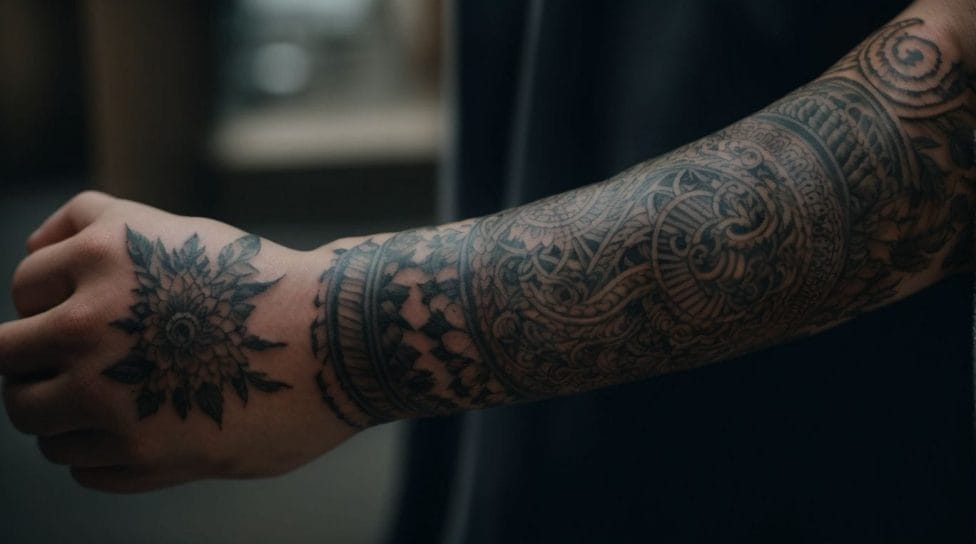
Photo Credits: Tattooineplanet.Com by Bryan Roberts
When it comes to getting a tattoo, there are a few additional factors that can greatly influence your experience. From emotional and mental preparedness, to the technique of the tattoo artist, and even the aftercare and healing process, each sub-section brings its own set of considerations. Let’s dive into these factors and explore how they play a crucial role in the overall tattooing journey. Strap in, because we’re about to uncover some key insights to ensure you make the right choices and have a comfortable tattoo experience!Emotional and Mental Preparedness
Emotional and mental preparedness plays a crucial role when it comes to getting a tattoo. To ensure a smooth experience, here are some steps you can follow: – Prioritize Research: Take the time to familiarize yourself with the tattoo process, including what to expect during and after the session. – Embrace Meditation or Deep Breathing Exercises: These practices are beneficial in calming the mind and reducing anxiety both before and during the tattooing process. – Harness the Power of Positive Affirmations: Repeating positive statements to yourself can help boost your confidence and alleviate any nerves you may have. – Visualize the Outcome: Take a moment to imagine the finished tattoo and focus on the excitement and joy it will bring you. This visualization can help alleviate any apprehensions. – Seek Support from a Trusted Individual: Having a friend or family member by your side during the tattooing process can provide the emotional support and reassurance you may need. – Maintain Open Communication with Your Tattoo Artist: It’s important to share any concerns or fears you have with your tattoo artist. They can guide you and create a comfortable environment for you. In addition, remember to trust the process and try to stay relaxed. By taking care of your emotional and mental well-being, you will enhance your overall tattoo experience.Tattoo Artist’s Technique
When getting a tattoo, the Tattoo Artist’s Technique used by the tattoo artist is crucial in determining the final result and level of pain. Here are some important steps in the tattoo artist’s technique:- Preparation: The artist will start by preparing the tattoo area, ensuring it is clean and sanitized.
- Stencil: They will then transfer the design onto the skin using a stencil, ensuring proper placement and proportion.
- Tattooing: The artist will use a tattoo machine to create the design, carefully controlling the depth and speed of the needle.
- Shading and Coloring: They may add shading and color to enhance the design, using different techniques and ink densities.
- Final Touches: Once the tattoo is complete, the artist will clean and bandage the area, providing aftercare instructions.
Aftercare and Healing Process
- Proper aftercare and a thorough healing process are vital for maintaining the longevity and appearance of your tattoo.
- Follow the recommended time to keep the bandage on, which serves as protection against bacteria for the fresh tattoo.
- Once the bandage is removed, delicately cleanse the tattoo using a mild, fragrance-free soap and lukewarm water.
- After washing, gently pat the area dry with a clean towel or allow it to air dry. Avoid any rubbing or scrubbing of the tattoo.
- To keep the skin moisturized, apply a thin layer of moisturizer that is both fragrance-free and alcohol-free.
- In order to prevent damage and infection, refrain from picking, scratching, or peeling the tattooed area.
- Avoid direct sunlight, swimming pools, hot tubs, and excessive sweating until the tattoo is completely healed.
- Opt for loose-fitting clothing to minimize friction and irritation on the tattooed area.
- Continue regular moisturization of the tattoo until it is fully healed, which typically takes several weeks.
- If you notice any signs of infection or other complications during the healing process, consult your tattoo artist or a dermatologist.
Tattoos Where Does It Hurt the Most?
- ✅ The head, rib cage and chest, stomach, nipples and breasts, and face and ears are the top 5 most painful places to get a tattoo. (Source: Our Team)
- ✅ Tattoos on the head can cause scorching and stinging feelings. (Source: Our Team)
- ✅ Rib cage and chest tattoos can be painful due to the thin skin and proximity to bones. (Source: Our Team)
- ✅ Stomach tattoos can vary in pain, with looser skin causing less discomfort. (Source: Our Team)
- ✅ Nipple and breast tattoos are likely to be very uncomfortable due to the sensitivity of the area. (Source: Our Team)

